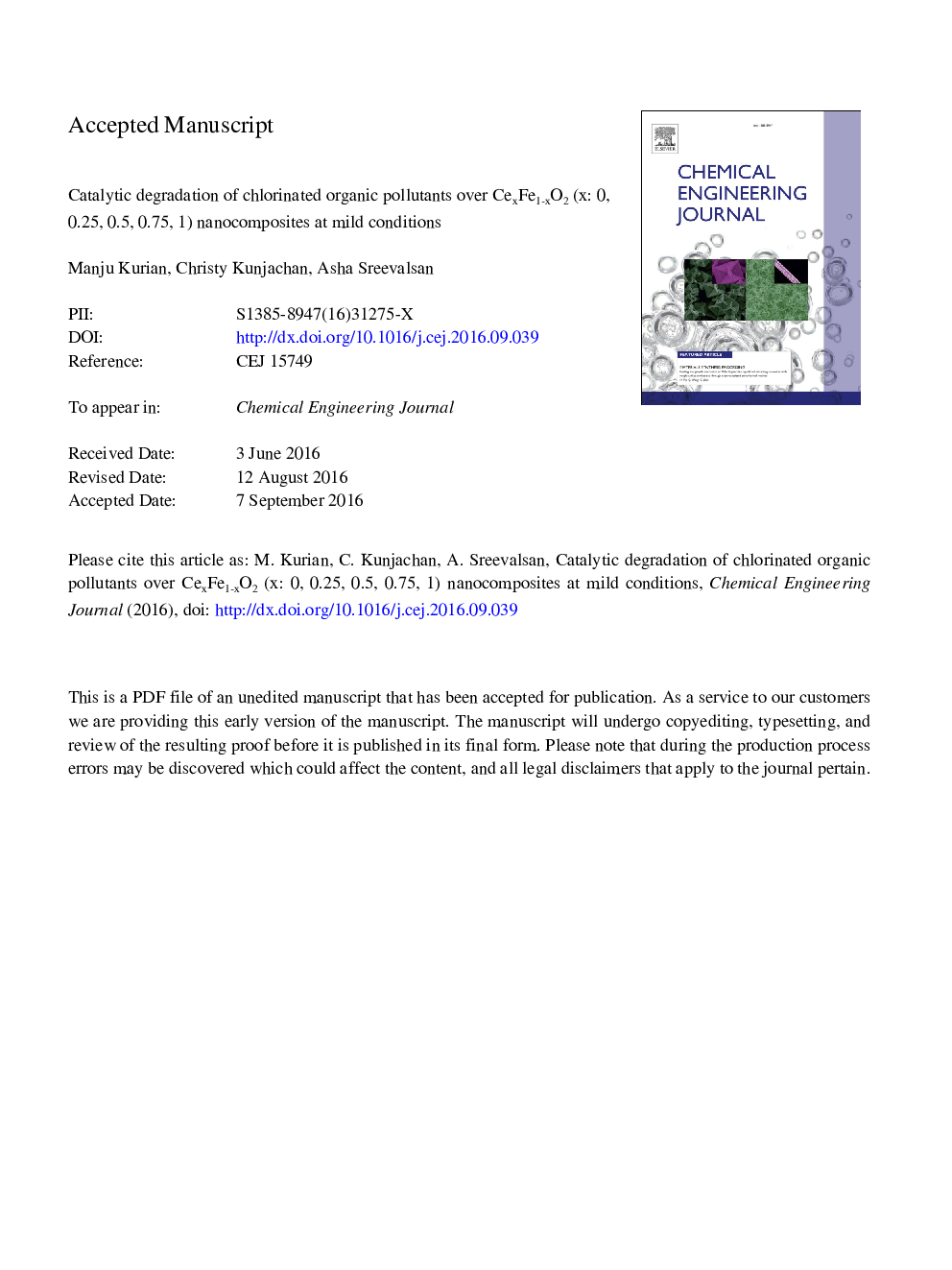| Article ID | Journal | Published Year | Pages | File Type |
|---|---|---|---|---|
| 4763685 | Chemical Engineering Journal | 2017 | 27 Pages |
Abstract
Oxidation of chlorinated organic pollutants (COPs) like 4-chlorophenol (4-CP), 2,4-dichlorophenol (2,4-DCP), 2,4-dichlorophenoxy acetic acid (2,4-D) using aqueous hydrogen peroxide (30% v/v) over CexFe1âxO2 (x: 0, 0.25, 0.5, 0.75, 1) nanocatalysts was studied. The catalysts were characterised by temperature programmed reduction (H2-TPR) and desorption (NH3-TPD and CO2-TPD) techniques. The reducing power of ceria increased on iron doping as revealed by TPR analysis. CexFe1âxO2 were effective catalysts for Wet Peroxide Oxidation of 4-CP, 2,4-DCP and 2,4-D pollutants. 4-CP (500 mg/L) was completely degraded with 37.38% TOC and 58.75% COD removal after 90 min at 70 °C using Ce0.25Fe0.75O2 catalyst. Complete 2,4-DCP (250 mg/L) conversion with 21.60% TOC and 42.44% COD removal was observed at 45 min over Ce0.5Fe0.5O2 catalyst at 50 °C. 100% catalytic oxidative conversion of 2,4-D (250 mg/L) with 23.64% TOC and 45.78% COD removal was achieved at 70 °C at 60 min. Atomic Absorption Spectrometry (AAS) indicated the extent of leaching of iron from the catalytic structure to be negligible. The mixed oxides were reusable and stable on consecutive uses as indicated by X-ray diffraction (XRD) and surface area measurements. The catalytic efficiency was retained after five successive runs.
Related Topics
Physical Sciences and Engineering
Chemical Engineering
Chemical Engineering (General)
Authors
Manju Kurian, Christy Kunjachan, Asha Sreevalsan,
